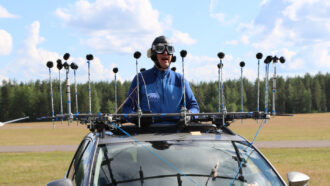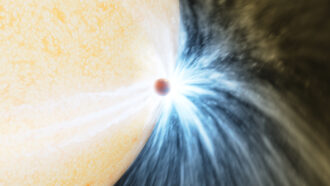
Oceans
Shading corals during midday heat can limit bleaching
Shading coral reefs during the sunniest part of the day may help corals survive marine heat waves.
Come explore with us!

Shading coral reefs during the sunniest part of the day may help corals survive marine heat waves.

This word describes sound waves that have frequencies too high for human ears to hear.

Researchers crafted tubes that can trick AI into mistaking one person’s voice for another’s. Bad guys could use such tricks to hack into accounts.

Lightning, stars, supermassive black holes and more give off radio waves.

Human ears don’t work well in the water. A mermaid would need marine creature features to talk to and understand her aquatic friends.

In a new experiment with bacteria, a lone photon sparked the process of turning light to chemical energy.

Sending a sound upwind, against the flow of air, actually makes the sound louder — only it doesn’t sound that way to the person making the noise.

With layers that work like polar bears’ skin and fur, a material absorbs light and keeps it from escaping.

A burst of light and a cloud of dust are signs that a distant star swallowed a giant planet.

The inner workings of microscopes, telescopes, eyeglasses and other lens-based devices rely on two important laws of optics.